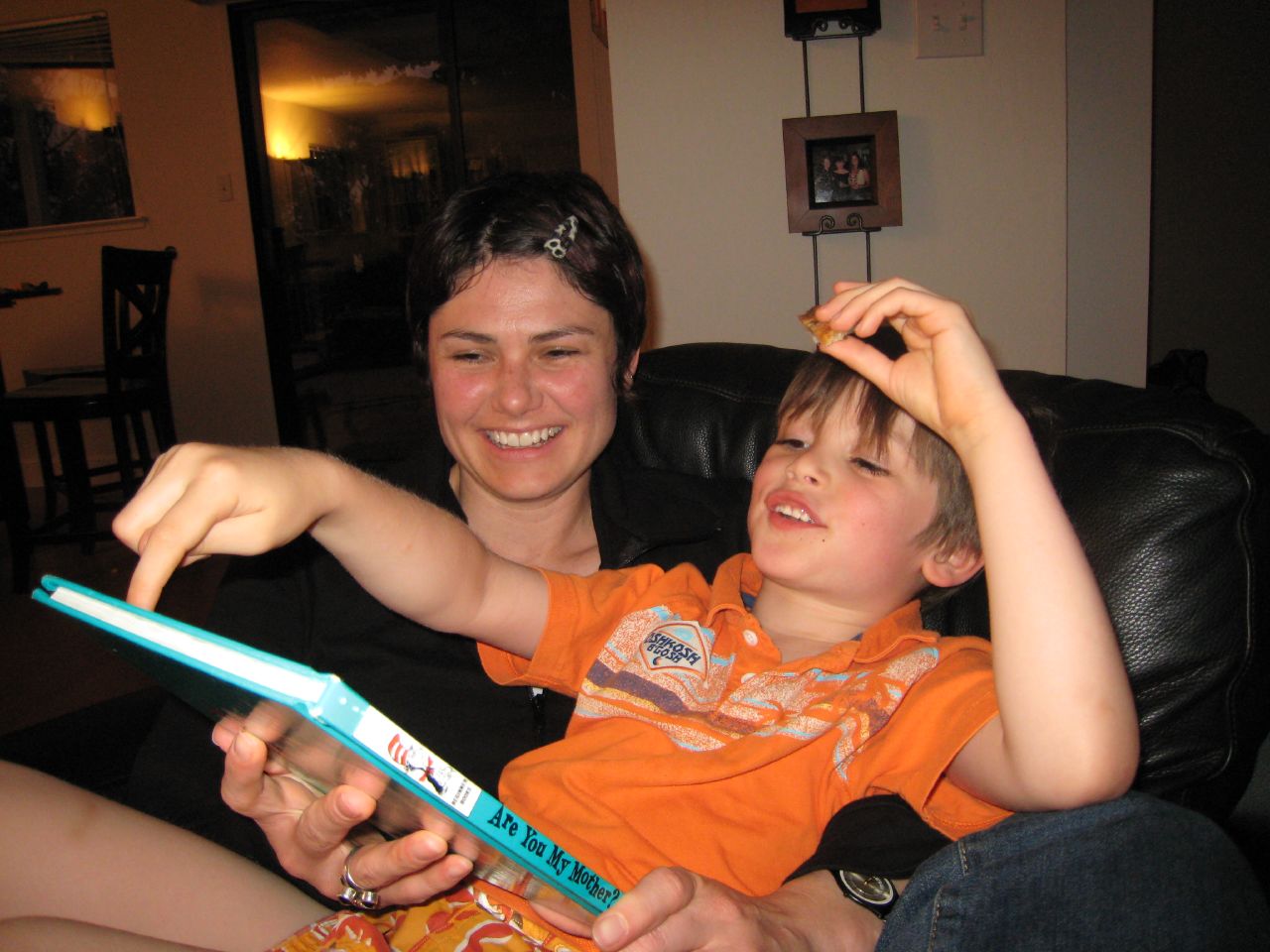Why does the Lidcombe Program for childhood stuttering work: a case of “words will never hurt me”?
The Lidcombe Program is an effective stuttering treatment for children under 6 years of age. Lidcombe Program treatment is 7.5 times more likely to reduce stuttering than natural recovery (Onslow et al., 2012).
You can read more about the Lidcombe Program here and here and here.
So why does it work?
A. Reward and punishment
When you cut through the jargon, the idea behind the Lidcombe Program is simple. You reward the behaviour you want (smooth, fluent speech). You punish the behaviour you don’t want (stuttering). It’s like those classic experiments where you give a rat some food when it behaves (does what you want), and jolt it with electricity when it doesn’t.
If, like me, the word “punish” makes you feel a bit squeamish when it comes to kids who stutter, you’re not alone. When talking about this aspect of the treatment, speech pathologists and researchers use all sorts of euphemisms – e.g. the snappy “verbal contingencies for stuttered speech” – to talk about the things we do to discourage stuttering.
Here’s what I find challenging: We think stuttering is a physical problem caused by a “glitch” in the brain. If we’re right, is it fair to ‘punish’ a child for something he or she can’t control?
The best answer to this question is of course that the Lidcombe Program works. Other answers are that the treatment focuses much more on rewards; and that the ‘punishing’ aspects of the treatment are not, in fact, very punishing.
Let’s look at these arguments in more detail.
B. Sticks and stones
(a) “But words will never hurt me”: the 5 verbal contingencies
The big difference between the Lidcombe Program and those rat experiments is that you reward and punish smooth speech and stuttering with words, rather than snacks and zaps. In response to a child’s speech, you use 5 different kinds of words and phrases to reward smooth talking and to discourage stuttering. In Lidcombe Program jargon, we call those words and phrases “verbal contingencies” because they are:
- words (i.e. “verbal”); and
- said in response to what the child does (i.e. the words and phrases parents use are “contingent” on what the child does, i.e. whether they stutter or speak smoothly).
Parents are trained to:
- reward their child for fluent speech with specific kinds of praise, comments and questions with a positive answer; and
- ‘punish’ their child for stuttering with no response, with comments on stuttering or requests for correction.
In reality, parents tend to mix and match the contingencies: one study of parents actually doing the treatment identified 21 different types of contingencies used by parents, most of which were the 5 “official” contingencies or combinations of the 5 (Swift et al., 2016).
(b) More rewards
The other big difference from rat experiments is that we focus much more on rewarding the child for fluent speech than on punishment. We do this by setting up activities in a way that makes it easier for the child to speak without stuttering. In this way, we get lots more opportunities to reward the child than to respond negatively to their stuttering. When I was first trained in the Lidcombe Program, we were told to reward the child at least 5-10 times as often as we responded negatively to stuttering, and this is a useful rule of thumb to avoid commenting on stuttering too often.
In practice, I give a lot more praise and other positive feedback for smooth speech than comments on stuttering, primarily because I work hard to set up the session so the child doesn’t stutter much (if at all) during treatment. This is consistent with what most parents do in the real world. One recent study showed 91% of verbal contingencies were for fluent speech, with only 6.8% for stuttering (and 2.7% given in error) (Swift et al., 2016).
C. Is the Lidcombe Program safe?
Yes.
When the idea of reward and punishment behavioural treatments for stuttering was first put forward, some academics thought it would harm children’s psychological development, or strain the family bond between parents and their kids, or hurt language development, or even change their children’s social use of language (e.g. Cook & Rustin, 1997).
Thankfully, none of these things is true. Lots of research shows the treatment is safe (Woods et al., 2002; Bonelli et al., 2000; Latterman et al., 2005). Many families report that they come to value the daily “smooth talking” time together.
D. Does everyone love the Lidcombe Program?
No.
Lots of families love the Lidcombe Program – especially its results. But it’s hard work, especially when progress is slow, if stuttering fluctuates, or if there are setbacks.
It’s the speech pathologist’s job to help parents to troubleshoot problems and to stay the course despite difficulties (e.g. fatigue, scheduling problems, interference from brothers and sisters). At the outset of treatment, I give parents a road map so they can see the ‘big picture’ and encourage them to speak openly about obstacles so I can help. I also warn parents upfront that:
- although the idea is simple, in practice, the program can be very difficult for parents to deliver, with some parents reporting feelings of guilt and frustration (e.g. Goodhue et al., 2010);
- some children don’t like the verbal contingencies (e.g. Onslow et al., 1990);
- negative reactions to verbal contingencies are fairly common, particularly at the beginning of treatment (Packman, 2007);
- some children appear to become decreasingly responsive to the verbal contingencies or even irritated by them (Hayhow, 2009);
- if parents give too many verbal contingencies for fluent speech, they can lose their reinforcing value (Chance, 2006); and
- when doing the program, some children may feel that they have done something wrong when they stutter (Goodhue et al., 2010). This can be tricky: on the one hand, we have to let the child know that stuttering is not their fault; but, on the other hand we are giving contingencies rewarding fluency and discouraging stuttering.
Probably the most controversial of the punishments (verbal contingencies for stuttering) is the “request for correction”. In simple terms, you tell the child she’s stuttered and ask her to say it again. Face-to-face with a child, it can be the most confronting contingency. Some children do not respond well to it, although many do. Some parents don’t like doing it, although others report that it seems to reduce stuttering.
E. So what are the essential elements of the Lidcombe Program?
We don’t know!
Because of the Lidcombe Program’s theoretical basis, we have assumed that rewarding fluent speech increased smooth speech; and that punishing stuttering decreased stuttering (e.g. Onslow et al., 2001). In other words, we assume that the verbal contingencies are the “active ingredient” that makes the treatment work. But there are other possible explanations for why the Lidcombe Program works, e.g.:
- the daily opportunity for the child to practice speaking with no or very little stuttering;
- the positive relationship between parents, the speech pathologist and the child;
- engagement of the parent and child in a regular, enjoyable activity, which they complete together;
- increased, positive attention from parents;
- increased parent focus on speech, including measuring progress;
- overall increased language-based interactions between parents and children; and
- unknown “functional mechanisms” that speed up the process of natural recovery,
(Sonneville-Koedoot et al., 2015; Onslow & Millar, 2012; Packman et al., 2015; Onslow et al., 1990; Onslow et al., 1994; and O’Brian & Onslow, 2011).
F. Is “punishment” essential?
New research makes us less certain about the role of verbal contingencies – especially about the “punishing” contingencies:
- One study showed that doing the Lidcombe Program without using the requests for self-correction for stuttered speech was just as effective at reducing stuttering by 50% as doing the program with requests for self-correction (Donaghy et al., 2015).
- Another study showed that giving more verbal contingencies for stuttered speech (i.e. punishments) in the first 4 weeks of treatment actually increases the amount of time necessary for a child to complete stage 1 of the Lidcombe Program treatment. This study also showed that, in practice, parents give their children fewer verbal contingencies during treatment than expected (Swift et al., 2016).
Taken together, these studies suggest that verbal contingencies for stuttering might not be contributing to treatment outcomes in the simple way we have assumed. However, we need a lot more research before we can safely conclude that verbal contingencies for stuttered speech are unnecessary. It’s possible, for example, that despite the apparent short-term disadvantages of giving them, contingencies for stuttered speech may play a role in achieving and maintaining fluency gains over the long-term (e.g. see Harrison et al., 2004). This would be consistent with principles of motor learning.
G. Clinical bottom line
The Lidcombe Program is an effective and safe treatment for young children who stutter. It’s simple in theory, but can be hard to do in practice. Not everyone likes it, although many do.
We’re not entirely sure why the Lidcombe Program works. Theoretically, giving verbal rewards and punishments for fluent and stuttered speech is essential. But the role of verbal rewards and punishments requires more research, especially for verbal contingencies for stuttered speech.
For speech pathologists, it’s essential that we stay on top of important new research like the research cited below. I do this by attending Lidcombe Program Consortium training sessions, regularly checking for updates on the Australian Stuttering Research Centre website, reading clinical trial reports as they are published, and by calling and emailing researchers and clinicians involved in some of the latest research – most of whom are very happy to discuss their research and its clinical implications.
Related articles:
- Children who stutter
- The Lidcombe Program for children who stutter
- The Lidcombe Program for stuttering: my 10 favourite therapy activities
- Lidcombe Program Stuttering Activities, Volume 2 (low-prep printable activities for face-to-face and Skype therapy)
- The Lidcombe Program for children who stutter: smooth talking rules for talkative children
- The Lidcombe Program Social Story: “Sometimes my speech is bumpy – but I’m practising every day to talk smoothly!”
- The more the merrier? New study on Lidcombe Program group therapy for children who stutter
- Now you can get treatment for your child’s stuttering without all those clinic visits
- My preschooler stutters: should we do the Lidcombe Program or the Westmead Program (or something else)?
- Stuttering treatments: what works for whom? An evidence update
- My child stutters. Is it because he’s shy? sensitive? hyper?
- Parent dilemma: what to so when your child stutters and has speech sound problems – research update
Principal sources:
- Donaghy, M., Harrison, E., O’Brian, S., Menzies, R., Onslow, M., Packman, A., & Jones, M. (2015). An investigation of the role of parental request for self-correction of stuttering in the Lidcombe Program. International Journal of Speech-Language Pathology, 17(5), 511-517.
- Swift, M.C., Jones, M., O’Brian, S., Onslow, M., Packman, A., & Menzies, R. (2016). Parent verbal contingencies during the Lidcombe Program: Observations and statistical modeling of the treatment process. Journal of Fluency Disorders, 47:13-26.
Image: http://tinyurl.com/zx2g3bh

Hi there, I’m David Kinnane.
Principal Speech Pathologist, Banter Speech & Language
Our talented team of certified practising speech pathologists provide unhurried, personalised and evidence-based speech pathology care to children and adults in the Inner West of Sydney and beyond, both in our clinic and via telehealth.








